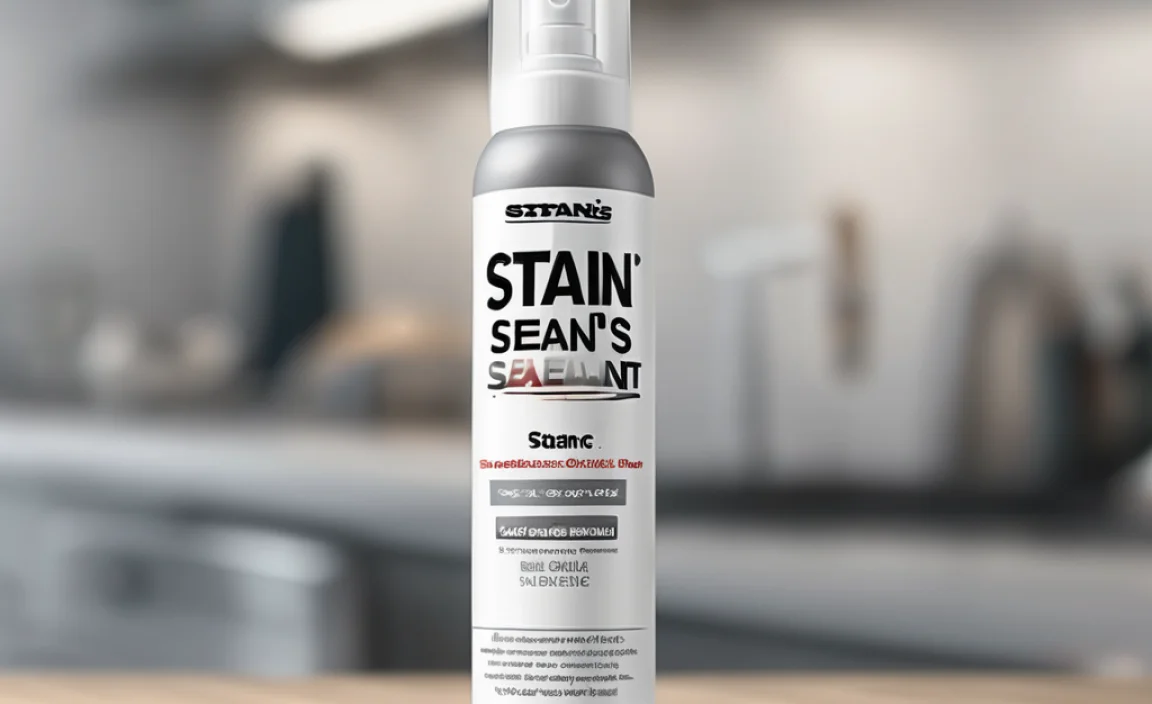Quick Summary: The amount of Stan’s sealant you need depends on your tire size. For standard mountain bike tires (26-29 inches), use about 2-3 ounces (60-90ml). For larger plus-size tires, increase this to 3-4 ounces (90-120ml). Road bike tires need less, around 1-2 ounces (30-60ml). Always check the sealant level every few months and top up as needed to keep your tires puncture-free!
Tire sealant is like a superhero for your bike tires. It stops those annoying punctures before they even become a problem. But getting the right amount of sealant can be tricky. Too little, and you’re still vulnerable to flats. Too much, and you’re adding unnecessary weight and mess.
Don’t worry! Figuring out the right amount of Stan’s sealant is easier than you think. In this guide, we’ll walk you through it step-by-step. We’ll cover everything from measuring the correct amount to topping it up when needed. Get ready to say goodbye to flats and hello to smooth riding!
What is Stan’s Sealant and Why Use It?

Stan’s sealant is a liquid that you put inside your bike tires to prevent punctures. It’s made by Stan’s NoTubes, a company famous for its tubeless tire technology. The sealant works by quickly sealing small holes in your tire as you ride. This means fewer flats and more time enjoying your bike!
Benefits of Using Stan’s Sealant
- Puncture Prevention: Seals small punctures instantly.
- Tubeless Conversion: Allows you to run tubeless tires, reducing the risk of pinch flats.
- Improved Ride Quality: Lower tire pressure for better grip and comfort.
- Cost-Effective: Saves money on replacement tubes and repairs.
How Does Stan’s Sealant Work?
Stan’s sealant contains small particles that circulate inside your tire. When a puncture happens, the escaping air carries these particles to the hole. They quickly clog the hole, creating a seal and stopping the leak. It’s like a tiny, tireless repair crew working inside your tire!
How Much Stan’s Sealant Do You Need?

The amount of Stan’s sealant you need depends on the size of your tires. Here’s a general guide:
- Road Bike Tires (700c): 1-2 ounces (30-60ml)
- Mountain Bike Tires (26-29 inch): 2-3 ounces (60-90ml)
- Plus Size Tires (2.8-3.0 inch): 3-4 ounces (90-120ml)
- Fat Bike Tires (3.8 inch and wider): 4-5 ounces (120-150ml)
These are just starting points. You might need to adjust the amount based on your specific tires and riding conditions. If you ride in areas with lots of thorns or sharp rocks, you might want to add a little extra sealant for added protection. Always refer to the tire manufacturer’s recommendations as well.
Here’s a handy table to help you determine the right amount of Stan’s sealant:
| Tire Type | Tire Size (Width) | Recommended Sealant Amount |
|---|---|---|
| Road Bike | 23-28mm | 1-2 ounces (30-60ml) |
| Gravel Bike | 30-45mm | 2-2.5 ounces (60-75ml) |
| Mountain Bike | 2.0-2.5 inch | 2-3 ounces (60-90ml) |
| Plus Size | 2.6-3.0 inch | 3-4 ounces (90-120ml) |
| Fat Bike | 3.8+ inch | 4-5 ounces (120-150ml) |
Step-by-Step Guide to Adding Stan’s Sealant

Adding Stan’s sealant is a straightforward process. Follow these steps to get it right:
Step 1: Gather Your Supplies
Before you start, make sure you have everything you need:
- Stan’s sealant
- A sealant injector or measuring cup
- A valve core removal tool
- A bike pump or compressor
- Rags or paper towels
- Gloves (optional, but recommended)
Step 2: Remove the Valve Core
Use the valve core removal tool to unscrew and remove the valve core from your tire valve. This will allow you to inject the sealant directly into the tire.
Step 3: Measure the Sealant
Use a sealant injector or measuring cup to measure the correct amount of Stan’s sealant for your tire size. Refer to the guidelines above or the manufacturer’s recommendations.
Step 4: Inject the Sealant
If using a sealant injector, attach it to the valve stem and slowly inject the sealant into the tire. If using a measuring cup, carefully pour the sealant into the valve stem.
Step 5: Reinstall the Valve Core
Use the valve core removal tool to reinstall the valve core. Make sure it’s snug but not too tight.
Step 6: Inflate the Tire
Use a bike pump or compressor to inflate the tire to the recommended pressure. Check the sidewall of your tire for the correct pressure range.
Step 7: Distribute the Sealant
Spin the wheel and bounce the tire to distribute the sealant evenly inside the tire. This will help it coat the entire inner surface and be ready to seal any punctures.
Step 8: Check for Leaks
Inspect the tire for any leaks around the valve stem or tire bead. If you see any leaks, rotate the wheel so that the leak is at the bottom. The sealant should quickly seal the leak.
Here’s a quick recap of the steps:
- Gather supplies.
- Remove valve core.
- Measure sealant.
- Inject sealant.
- Reinstall valve core.
- Inflate tire.
- Distribute sealant.
- Check for leaks.
Tips for Working with Stan’s Sealant

Here are some extra tips to help you get the most out of your Stan’s sealant:
- Shake Well: Always shake the sealant bottle well before use to ensure the particles are evenly distributed.
- Clean the Valve: Before reinstalling the valve core, clean it with a rag to remove any sealant residue. This will prevent it from sticking.
- Check Regularly: Check your sealant level every few months, especially before long rides. The sealant can dry out over time, reducing its effectiveness.
- Add as Needed: If the sealant is low or dried out, add more to maintain adequate protection.
- Store Properly: Store the sealant in a cool, dry place away from direct sunlight.
- Mix with Glitter (Optional): Some riders add glitter to their sealant to help identify punctures more easily. The glitter will sparkle at the spot of the leak.
Troubleshooting Common Issues

Sometimes, things don’t go exactly as planned. Here are some common issues you might encounter and how to fix them:
Issue: Sealant Leaking from the Valve Stem
Solution: This usually happens if the valve core is not tight enough or if there is sealant residue on the valve core. Remove the valve core, clean it thoroughly, and reinstall it, making sure it’s snug but not overtightened.
Issue: Sealant Not Sealing Punctures
Solution: This could be due to several reasons. The sealant might be old or dried out, or the puncture might be too large for the sealant to handle. Add fresh sealant or consider using a tire plug for larger punctures.
Issue: Tire Not Seating on the Rim
Solution: This is common when setting up tubeless tires for the first time. Make sure the tire bead is properly seated in the rim channel. Use a tire lever to help seat the bead if needed. Inflating the tire quickly with a compressor can also help.
Issue: Sealant Drying Out Quickly
Solution: This can happen in hot, dry climates. Use a sealant refresher or add a small amount of water to the sealant to keep it from drying out too quickly. Store your bike in a cool place when not in use.
When to Replace Stan’s Sealant
Stan’s sealant doesn’t last forever. Over time, it will dry out and lose its effectiveness. Here’s how to know when it’s time to replace your sealant:
- Check Every Few Months: As a general rule, check your sealant every 2-3 months.
- Feel the Tire: If you can feel a dry, rubbery buildup inside the tire, it’s time to replace the sealant.
- Listen for Sloshing: If you don’t hear any sloshing sound when you spin the wheel, the sealant might be dried out.
- Punctures Not Sealing: If you’re getting more flats than usual, or if punctures aren’t sealing properly, it’s time to replace the sealant.
To replace the sealant, remove the tire from the rim, clean out any old sealant residue, and install fresh sealant following the steps above.
Alternatives to Stan’s Sealant
While Stan’s sealant is a popular choice, there are other tire sealants available. Here are a few alternatives:
- Orange Seal: Known for its long-lasting formula and ability to seal larger punctures.
- Finish Line FiberLink: Contains Kevlar fibers for added puncture protection.
- Slime Pro Tubeless Sealant: A budget-friendly option that’s effective for preventing flats.
- Muc-Off No Puncture Hassle: Biodegradable sealant with microfibers to seal punctures quickly. Learn more about Muc-Off Sealant
Each sealant has its pros and cons, so do some research and choose the one that best fits your needs and riding style.
Stan’s Sealant vs. Tire Plugs
For larger punctures that sealant can’t handle, tire plugs are a great solution. Tire plugs are small, sticky strips of rubber that you insert into the puncture to create a permanent seal.
Here’s a comparison of Stan’s sealant and tire plugs:
| Feature | Stan’s Sealant | Tire Plugs |
|---|---|---|
| Puncture Size | Small punctures (up to 3mm) | Larger punctures (3mm and up) |
| Installation | Added before riding | Installed after a puncture occurs |
| Effectiveness | Prevents most flats | Repairs larger punctures quickly |
| Mess Factor | Can be messy if a large puncture occurs | Less messy |
| Longevity | Needs to be replaced every few months | Permanent repair |
It’s a good idea to carry both sealant and tire plugs with you on your rides. Sealant will prevent most flats, and tire plugs will be there for those larger, more stubborn punctures.
FAQ About Stan’s Sealant
How often should I add Stan’s sealant?
You should check your sealant levels every 2-3 months and add more as needed. Sealant can dry out over time, especially in hot climates.
Can I mix different brands of sealant?
It’s generally not recommended to mix different brands of sealant. They may have different chemical compositions that could react negatively and reduce their effectiveness.
Can I use Stan’s sealant in tubed tires?
Yes, you can use Stan’s sealant in tubed tires to help prevent flats. However, it’s more effective in tubeless setups.
How do I clean up Stan’s sealant?
Stan’s sealant is water-soluble, so you can clean it up with soap and water. Use a rag or sponge to wipe away any spills or residue.
What happens if I get Stan’s sealant on my clothes?
If you get Stan’s sealant on your clothes, rinse it off with cold water as soon as possible. You may need to use a mild detergent to remove any stains.
Is Stan’s sealant environmentally friendly?
Stan’s sealant is made from natural latex and is considered relatively environmentally friendly. However, it’s always a good idea to dispose of it properly.
Can I fly with Stan’s sealant in my tires?
Yes, you can fly with Stan’s sealant in your tires. The pressure changes during flight will not affect the sealant.
Conclusion
Using Stan’s sealant is a simple and effective way to prevent flats and enjoy smoother, more confident rides. By following these steps and tips, you can easily add sealant to your tires and keep them protected from punctures. Remember to check your sealant levels regularly and replace the sealant as needed to maintain its effectiveness.
Don’t let flats ruin your ride. With Stan’s sealant, you can focus on enjoying the journey and exploring new trails, knowing that your tires are protected. So go ahead, get out there and ride with confidence!


